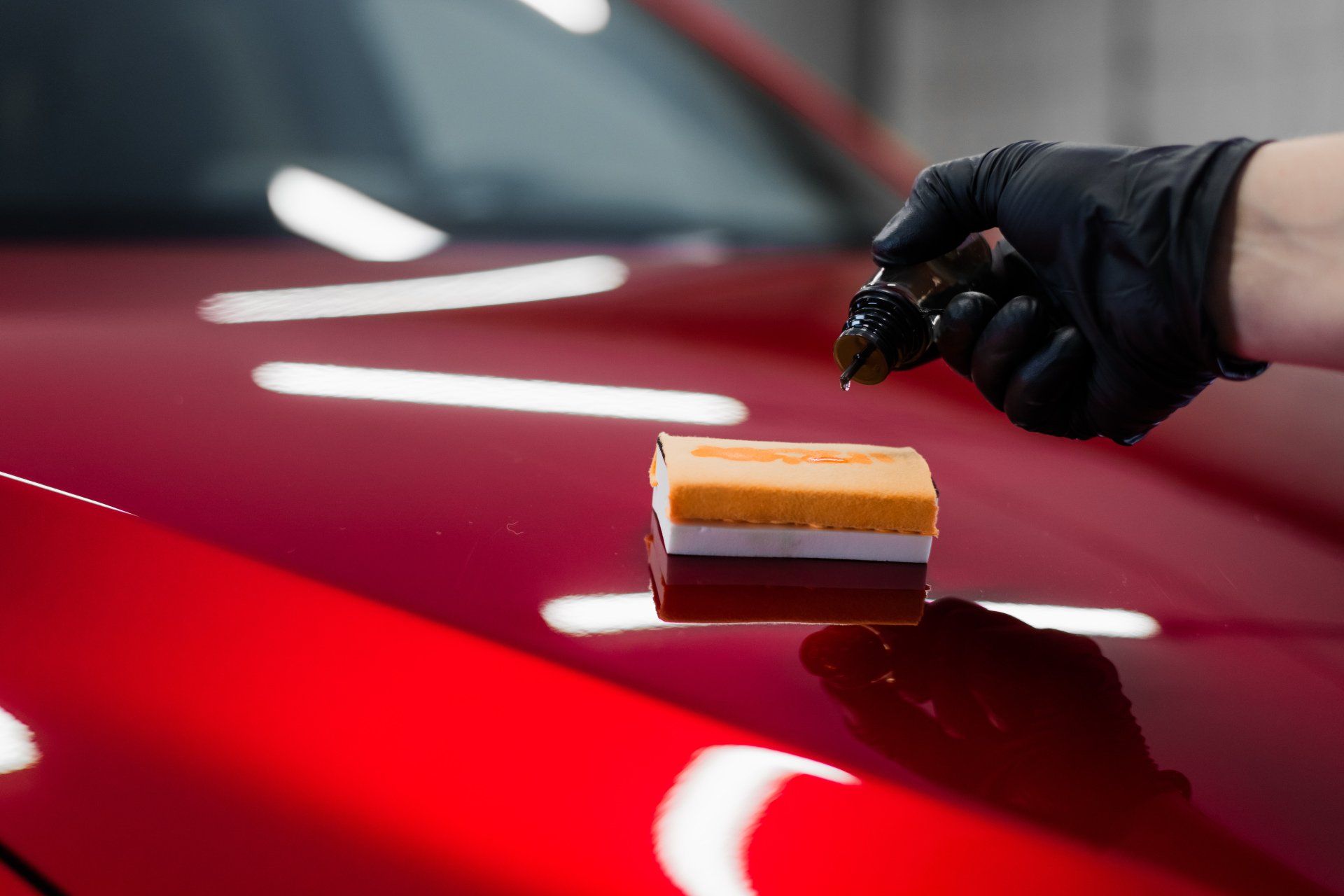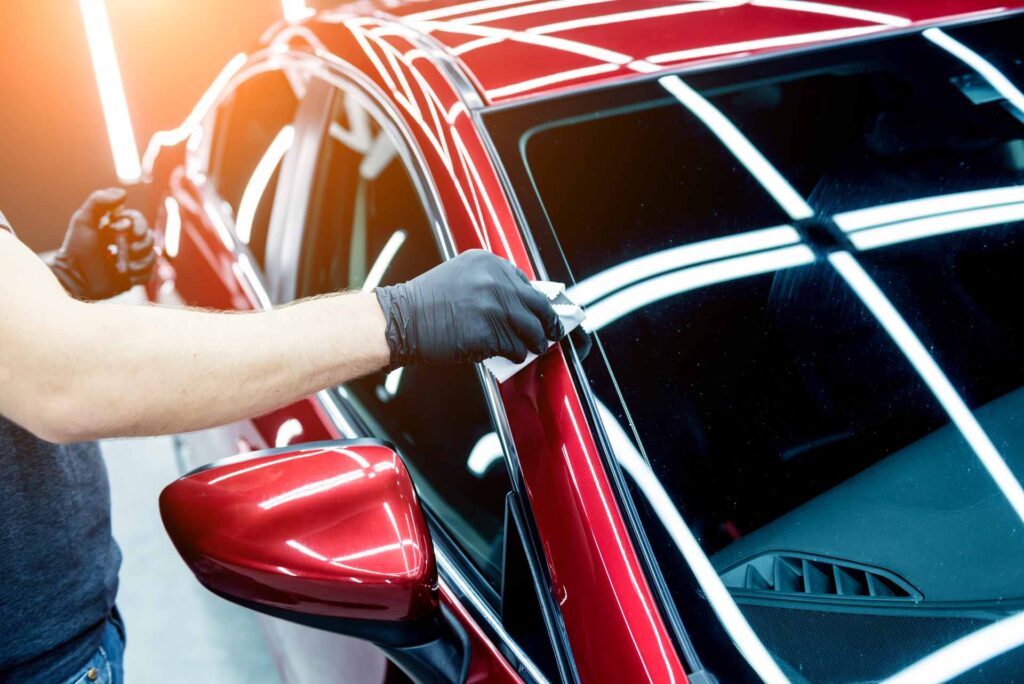Recognizing the Scientific Research Behind Ceramic Coating for Improved Lorry Toughness
The science of ceramic layer is reinventing vehicle upkeep by providing a powerful guard against extreme environmental elements. At its core, this innovation harnesses the power of silicon dioxide and titanium dioxide to form a resilient, protective layer. What precisely makes these compounds so reliable in protecting an automobile's exterior? As we check out the intricate structure and application procedure of ceramic finishes, we uncover the secrets behind their superior defense and longevity. Just how does this contrast to standard techniques, and what implications does it have for vehicle upkeep in the long term? The answers may surprise you.

Composition of Ceramic Coatings
Ceramic layers are largely made up of silicon dioxide (SiO2), which is originated from all-natural products like quartz and sand. This substance creates the backbone of the finish, giving its characteristic solidity and resistance to ecological components. In addition to SiO2, ceramic layers typically incorporate titanium dioxide (TiO2) for enhanced UV defense and boosted resistance to ecological pollutants. These nanocomposite materials produce a robust, chemical bond with the automobile's surface, offering an enduring safety layer.
The formulation of ceramic layers is a thorough process where the focus of SiO2 can dramatically influence the finishing's performance. Higher SiO2 content commonly causes greater durability and hardness, adding to the covering's ability to stand up to scratches and chemical etching. Nevertheless, the equilibrium of parts is critical; way too much SiO2 can make the coating brittle, while inadequate can endanger its safety buildings.
Producers might also integrate extra compounds, such as polysilazane, to improve adaptability and simplicity of application. These additives boost the finishing's hydrophobic properties, making certain water and contaminants grain off the surface area easily. This engineered structure highlights the efficiency of ceramic coatings in guarding a car's outside against a selection of damaging conditions.
Application Process Described
Applying a ceramic finishing to a lorry includes a number of crucial actions, each important to making sure optimum adhesion and performance of the protective layer - ceramic coating. The procedure starts with a comprehensive clean and decontamination of the automobile's surface to get rid of dirt, gunk, and previous waxes or sealants. This action is critical as any kind of pollutants left on the surface can hinder the coating's capability to bond properly
Following the preliminary cleaning, the next action involves brightening the vehicle to get rid of any imperfections, such as swirl marks or scratches. Polishing guarantees a smooth surface, which is crucial for the layer to stick correctly and give an uniform coating. After brightening, a surface area prep work spray is used to remove any kind of staying residues and make sure that the surface area is entirely clean.

Protective Advantages
Typically hailed for its extraordinary protective top qualities, a ceramic finishing offers many benefits that significantly improve vehicle durability. At its core, ceramic finish forms a hard, semi-permanent obstacle over a car's outside, which serves as a guard against numerous environmental dangers. This advanced layer of defense efficiently secures against UV rays, oxidation, and fading, keeping the vehicle's initial paint and luster. It reduces the threats positioned by unsafe pollutants such as bird droppings, tree sap, and roadway grime, which, if left without treatment, can lead to long-term damages.
Moreover, ceramic coverings display hydrophobic buildings, suggesting they push back water and assist in a self-cleaning effect. This characteristic reduces the adherence of dirt and mud, streamlining upkeep and cleaning procedures. The finish's resistance to chemical etching even more makes certain that the car's surface stays unblemished regardless of direct exposure to rough cleaner and contaminants.
In addition to these protective benefits, the ceramic finishing improves a vehicle's aesthetic charm by producing a glossy finish that accentuates shade deepness and quality. This not just maintains the automobile's visual charm but likewise adds to its long-lasting value by preserving the honesty of its outside gradually.
Contrasting to Standard Techniques
Unlike conventional methods of vehicle defense, such as shaving or sealants, ceramic finishings provide a more sturdy and durable service. Where waxes and sealers usually provide a temporary layer of defense, commonly requiring reapplication every few months, ceramic coverings develop a semi-permanent bond with the vehicle's paint. This bond develops a protective layer that is immune to environmental contaminants, UV damages, and minor abrasions.
Traditional waxes are largely composed of all-natural components like carnauba wax, giving a glossy coating however doing not have the robust safety top qualities of ceramic finishes. Sealants, while artificial and offering slightly better durability than waxes, still drop brief in comparison to the strength and chemical resistance of ceramic finishings. The advanced innovation of ceramic coatings includes nanotechnology, which enables them to fill out microscopic blemishes in the paint surface, leading to a smoother and more hydrophobic finish.
In regards to application, ceramic coatings need an even more meticulous process, usually requiring expert installment to ensure ideal efficiency. This contrasts with the reasonably straightforward application of sealants and waxes, which can be applied in the house. The superior protection and aesthetic enhancement supplied by ceramic finishings justify the investment for those seeking long-term car preservation.
Durability and Upkeep
Just how does the durability of ceramic continue reading this finishings translate right into ease of maintenance for vehicle proprietors? The sophisticated formulation of ceramic coatings gives a durable protective layer on the vehicle's surface area, which substantially extends the life-span of the vehicle's exterior coating.
Additionally, the hydrophobic nature of ceramic coverings makes it possible for water and various other liquids to grain up and roll off the surface area, bring dirt and particles with them. This residential property reduces the buildup of pollutants, making regular cleaning a lot more efficient and much less labor-intensive. Proprietors take advantage of a constantly streamlined, glossy look with minimal initiative. While the layer itself is lasting, it is not totally maintenance-free. Regular assessments for damages and occasional reapplication are suggested to ensure the protective layer continues to be undamaged. Therefore, ceramic layers offer a valuable equilibrium in between long-term toughness and streamlined maintenance for car treatment.
Conclusion
Ceramic finishes, with their innovative chemical make-up of silicon dioxide and titanium dioxide, supply a powerful barrier against environmental damages, dramatically boosting automobile toughness. The hydrophobic properties advertise self-cleaning, lowering upkeep efforts and preserving visual allure. When compared to traditional methods, ceramic layers supply remarkable protection versus UV rays, oxidation, and chemical etching. This modern technology prolongs the lifespan of lorry outsides, making it an innovative remedy for long-lasting preservation and marginal upkeep.
The formula of ceramic coatings is a thorough process where the focus of SiO2 can considerably affect the covering's performance.Applying a ceramic finishing to a vehicle includes numerous crucial Website actions, each essential to making sure optimal bond and efficiency of the safety layer.Frequently hailed for its phenomenal protective high qualities, a ceramic layer offers More Bonuses many advantages that significantly enhance car longevity. The advanced formulation of ceramic finishes gives a durable protective layer on the car's surface, which substantially expands the life-span of the vehicle's exterior surface.Ceramic finishes, with their innovative chemical make-up of silicon dioxide and titanium dioxide, give a formidable barrier against environmental damages, significantly enhancing lorry toughness.